Blog - EXPERTISE & INNOVATIONS - Solid State Relays - Life expectancy of Solid State Relays
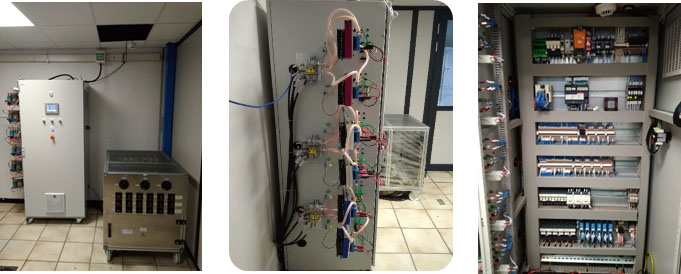
As a worldwide leader in the development and manufacturing of Solid State Relays, celduc performs regular lifetime tests and also reviews its products versus its competitors.
Over several months, celduc tested its products side-by-side with two well-known brands of Solid State Relays (SSRs). In this article, we will review the tests conditions we used and present the tests results so that you can evaluate our products versus others on the market. We will also provide some technical details so that you can better understand the reasons why our products are a better choice for your application. . But first, let us remind you why Product Testing is important.
The goal of these product lifetime tests was to measure the number of cycles the products could withstand.
Please note that the number of cycles mentioned in this article are not to be used as qualification data. The results presented are a comparison between different brands of SSRs. In actual operating conditions, the number of cycles an SSR can withstand depends on a number of factors, some of which are covered in this article.
Extensive life cycle testing was needed to stress the tested parts. Products designed for years of use, such as Solid State Relays, would take years of standard testing to determine life cycle limitations. Thus, accelerated life testing is used to evaluate a product’s lifecycle while speeding up the aging process.
During our evaluation, we subjected equivalent SSRs from Celduc and two of our major competitors to the same test conditions. The tests were performed in our laboratory.
During the accelerated life testing, rapid heating and cooling of the relays was done.
The test was set with the Rthjc (junction to case thermal resistance) of celduc’s 50A single-phase SSR part number SO965460.
The parameters which were used are listed below. The same tightening torque of 1.9 Nm was used for mounting all three brands of SSRs.

In this report we are not mentioning the competitor SSR brand names. They will be named as « Competitor 1 » and « Competitor 2 ».
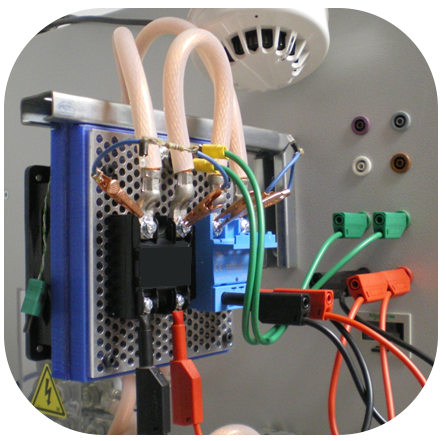
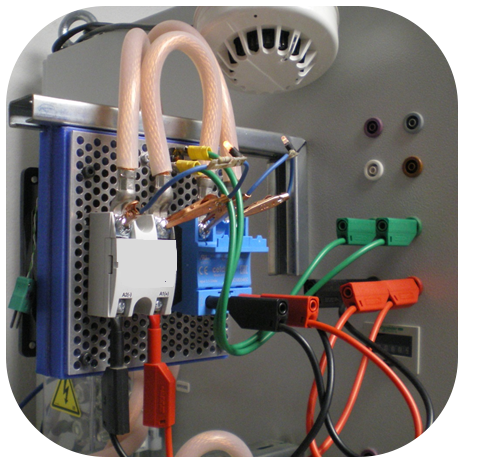
After several months of running tests, here are the results :
As shown above, the celduc SSRs had a lifetime of more than twice the competitors that we tested under the same conditons.
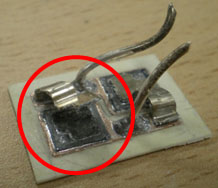
For Competitor 1, the same cause of failure was observed for both SSRs which were tested: delamination of the solder between the copper bridge and the dice leading to temperature increase of the connection and destruction of the thyristor chip.
Type of defect for Competitor 1 : Short-circuit
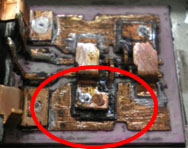
For Competitor 2, the same cause of failure was observed: melting of the power chip
Type of defect for Competitor 2 : Short-circuit (Output)
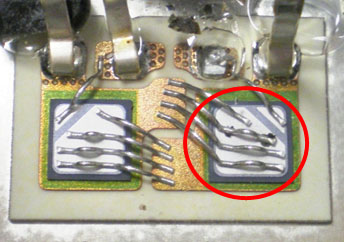
The typical failure for the celduc SSRs was a lift-up: which means that the bonding wire is no longer connected to the power chip. This is due to its small size and flexibility. With this type of failure you have less risk of fire as it results in an open-circuit.
Type of defect for celduc : Open-circuit (Output)
In general, there are two types of technologies used in the manufacturing of Solid State Relays:
Both of celduc’s competitors use copper bridge technology for their power elements. This is the “Standard” technology used by the majority of Solid State Relay manufacturers. This technology allows the use of a manual manufacturing process but it makes it critical to control the thickness, the flatness and the homogeneity (voids) of the solder between the copper bridge and the connection of the thyristor. Furthermore, checking the connection with the copper bridge requires an X-ray or a SAM (Scanning Acoustic Microscope) which is difficult to implement within the production process (therefore tests can only be performed by sampling).
As product inspection is difficult to automate, process reliability is impacted.
Since this type of connection is rigid as compared to wire bonding technology, the disconnection can only occur when the thyristor dice is completely destroyed (burnt). This explains the type of failures observed for Competitor 1 and Competitor 2.
celduc’s Solid State Relays are manufactured with this technology. The copper clips are replaced by a multitude of bonding wires with several anchor points that can withstand significant overload currents.
While Copper bridge Technology is difficult to automate, Wire bonding Technology is fully automatic, giving rise to total control of the production process. In addition, the connections between the wires and the chip are tested after connection (pull test) and by sampling (pull and shear tests). This increases the product’s reliability.
These differences in Technologies explain why celduc’s SSRs fail in a different way than standard technology products and why celduc’s SSRs last longer.
Read more about these technologies
Life Expectancy does not depend exclusively on the technology used for the power elements (clip or bonding). Indeed, disconnections or destruction are the ultimate consequences of internal wear of the relay. The entire construction of a Solid State Relay influences its lifespan, including the way the ceramic is mounted on the base and the number of layers between the thyristor and the base (DCB). celduc is constantly optimizing all these parameters to increase the lifetime expectancy of its products.
-celduc relais SSRs offer a LONGER SERVICE LIFE. Under the same conditions of use, they can last up to two times longer than other solutions thereby reducing maintenance cycles and end product failures.
-GENERALLY CELDUC’s SSRs FAILED IN A SAFER MANNER – There is a higher probability to have an open output circuit with our technology than with the competitors’ technology (copper bridge).